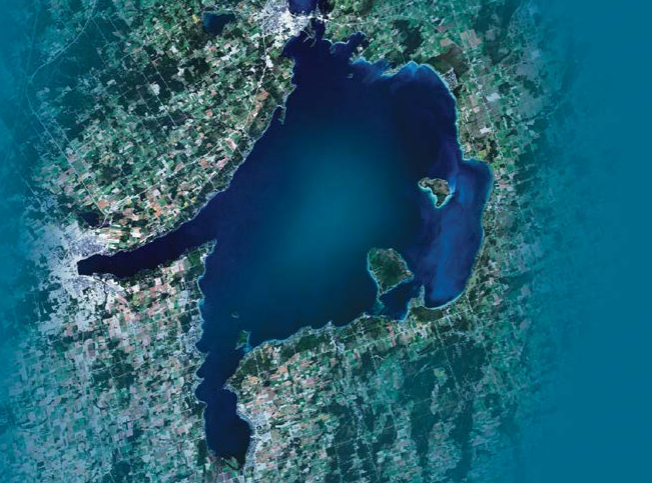Barrie councillors’ position on the Upper York Sewage Solutions Project is awash with delay.
A motion by Coun. Mike McCann supporting the province, and the Chippewas of Georgina Island, in the diversion of this project’s effluent to Lake Ontario, not Lake Simcoe, was withdrawn from the March 29 general committee agenda.
“Some new information has come on the table. I’m doing some investigation,” McCann said of withdrawing his motion. “I want to make sure the staff report back is a full and complete report, and I don’t want to confuse residents or confuse staff or have a confused situation.
“I’ll give better direction to staff once I get more information,” added the Ward 10 councillor.
McCann said he expects the matter to be back on general committee’s agenda shortly. It next meets April 19.
He eventually wants the motion referred to Barrie’s infrastructure department staff to provide further information and report back, including what other municipalities along Lake Simcoe municipalities are doing.
The $715-million Upper York Sewage Solutions (UYSS) project was proposed more than a decade ago. Its environmental assessment was completed in 2014, and ever since it has been awaiting the green light from the province.
Claire Malcolmson of Rescue Lake Simcoe Coalition, which recently released Lake Simcoe Under Pressure 2021: Key Stressors and Solutions, with Simcoe County Greenbelt Coalition, said the province needs to do a better communications job.
“The Upper York question is what’s the game plan here? Where’s the transparency?” she said. “I’m very glad to see this on Barrie’s agenda.
“This decision on Upper York, it affects York Region the most in terms of its ability to service development sooner or later, but it also affects all of the other municipalities — and especially Barrie, Georgina, Orillia, Innisfil — the municipalities that are right on the lake. They are right to question this and have a public conversation.”
McCann’s motion said the construction of the Upper York Sewage Solutions Project will eject 47 million litres of effluent water into the Lake Simcoe watershed on a daily basis, and this effluent will contain untreatable pharmaceuticals and micro-plastics, and will raise the temperature of Lake Simcoe.
Mike Rabeau, York Region’s director of capital planning and delivery for environmental services, was asked to comment on this part of the motion.
“We understand there are general concerns with treated municipal wastewater effluent regarding pharmaceuticals and personal care products and micro-plastics,” he said. “The province is working with its partners to determine the effect of micro-constituents on Ontario lakes and rivers; the proposed UYSS treatments are the most effective for removing concentrations of these types of substances to either non-detectable or extremely low concentrations.
“The proposed UYSS solution reduces total phosphorus loading in the Lake Simcoe watershed,” Rabeau added. “At full capacity, years after startup, 40 mega-litres per day of clean water effluent would be discharged. UYSS will improve water quality and reduce algae growth in the East Holland River and Lake Simcoe.”
The Ontario government has proposed moving the effluent to the Lake Ontario watershed instead.
Duffin Creek Water Pollution Control Plant is a wastewater treatment facility located in Pickering on the shore of Lake Ontario. It treats wastewater from 80 per cent of the residences and businesses in the Regional Municipality of York, and from all residences and businesses in Ajax and Pickering, which are in the Regional Municipality of Durham. It’s part of the York Durham sewage system.
The government is considering building a new southern trunk sewer to transport wastewater to the Duffin Creek treatment plant.
Ontario’s Ministry of the Environment, Conservation and Parks has said a decision has not been made on the Upper York Sewage Solutions environmental assessment application.
Rabeau has said York Region is proposing a water reclamation centre and an integrated project-specific total phosphorus off-setting program to ensure an overall net reduction of total phosphorus loading to Lake Simcoe at a three-to-one ratio. The centre would be a state-of-the-art facility with four levels of treatment, including membrane filtration and reverse osmosis, Rabeau said, and this solution reduces total phosphorus loading in the Lake Simcoe watershed.
A potential location is near the border of the Township of King and Bradford West Gwillimbury, where the Holland Marsh Canal meets the Holland River. An environmental assessment would need to confirm this, Rabeau has said, noting it would be one of the first mechanical treatment facilities for large-scale removal of phosphorus from run-off in Canada.
The Upper York Sewage Solutions project has faced opposition from the Chippewas of the Georgina First Nation, who are concerned about its impact on Lake Simcoe. The Chippewas undertook their own environmental assessment of the project.
— With files from NewmarketToday



